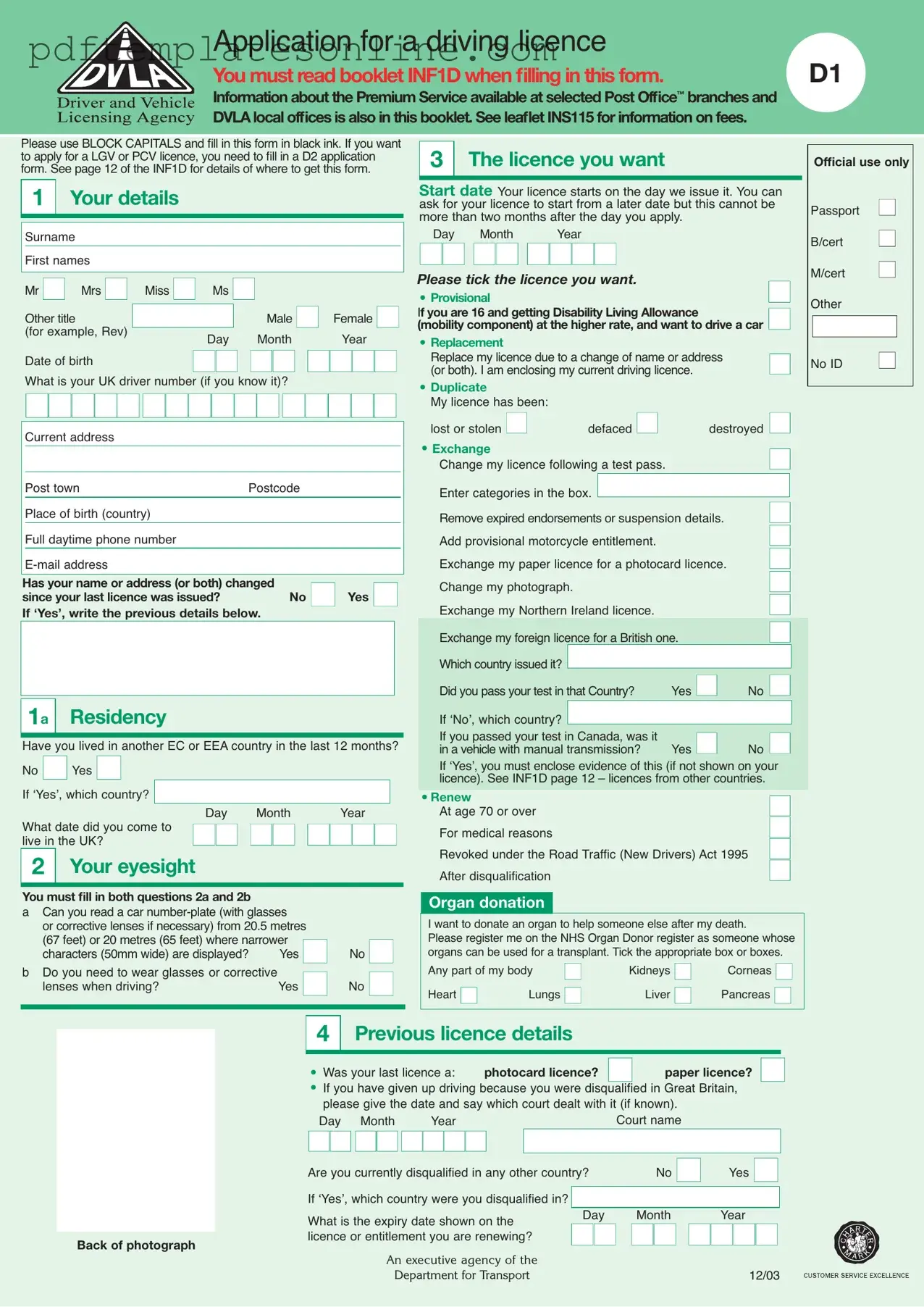Filling out the D1 DVLA form can be a straightforward process, but many people make common mistakes that can delay their application. One frequent error is not using block capitals and black ink, as specified in the instructions. This can lead to misinterpretation of the information provided, causing unnecessary complications.
Another common mistake is failing to provide a complete address or omitting the postcode. Every detail matters, and missing information can result in the application being returned. Ensure that the address is current and accurate to avoid any delays.
Many applicants overlook the requirement to indicate whether they have lived in another EC or EEA country in the past 12 months. Not answering this question or answering incorrectly can lead to complications. If the answer is yes, be sure to specify the country and the date of arrival in the UK.
In section 2 regarding eyesight, some individuals might mistakenly assume they can skip this part. However, both questions must be answered accurately. Failing to confirm whether corrective lenses are needed can lead to issues later on, especially if a driving test is required.
When selecting the type of licence you want, applicants often forget to tick the appropriate box. This oversight can result in the wrong application type being processed. Take a moment to review your choices carefully before submitting the form.
Additionally, individuals sometimes neglect to provide the necessary identity documents. Photocopies are not acceptable, and failing to include original documents can delay the process significantly. Always double-check the list of required documents before sending your application.
Another mistake involves signing the photograph incorrectly. The person signing must meet specific criteria, and their signature must be clear and legible. Ensure that the person signing has known you for at least two years and is not a relative or a member of the Post Office staff.
Some applicants do not read the instructions in the accompanying booklet, INF1D, thoroughly. This booklet contains essential information about the application process, including fees and additional requirements. Ignoring this resource can lead to mistakes that could have been easily avoided.
Lastly, failing to sign the application in the designated area is a common error. The signature must be within the white box, and it should be in black ink. An unsigned application will be returned, causing delays in obtaining your driving licence.
By being mindful of these common mistakes, you can ensure a smoother application process. Taking the time to review your form carefully will help you avoid unnecessary complications and expedite the issuance of your driving licence.
